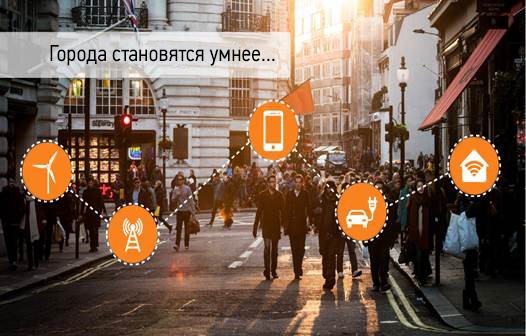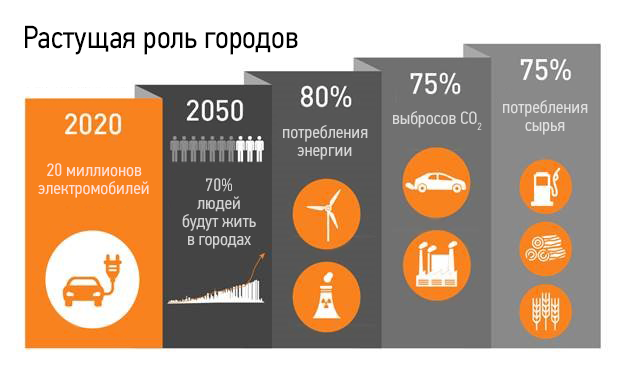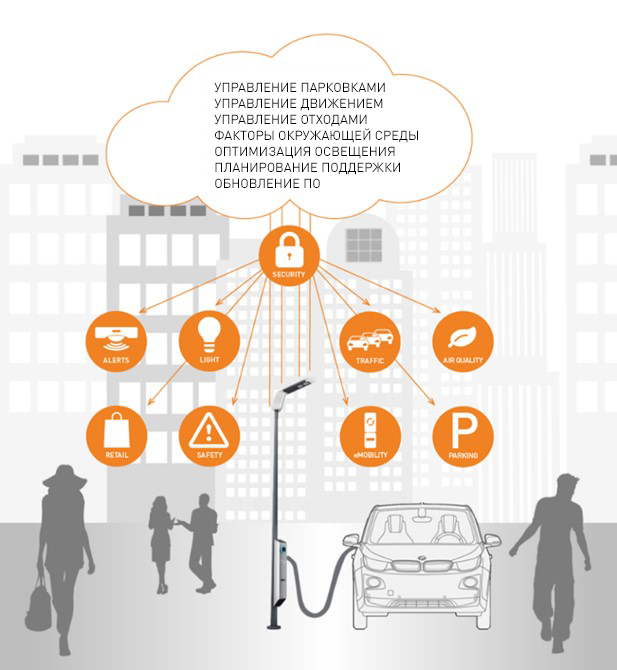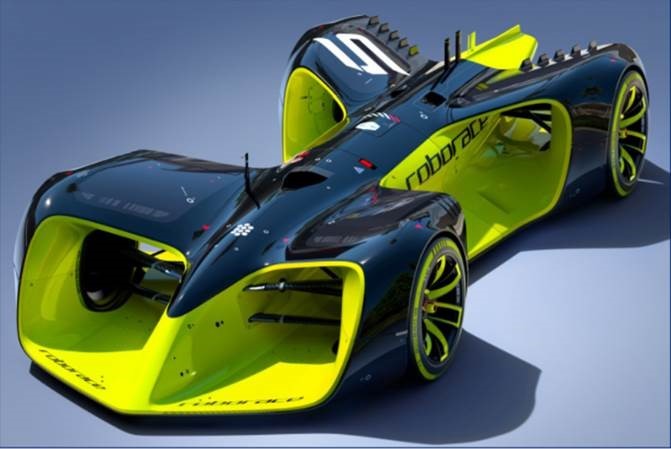Smarting Cities
We all have heard about the social and environmental problems that arise against the background of constant global urbanization. However, smart city technologies seem to be able to provide answers to many of the questions posed, and not only solve the problems of climate change, overpopulation, or excessive consumption of resources — smart technologies can make our lives even more convenient and comfortable. What technologies are we talking about?

We have already written about the potential of the Internet of Things in nature conservation . Thanks to the billions of embedded sensors, government agencies and companies are able to more fully assess carbon dioxide emissions and monitor pollution levels. At the 2017 World Mobile Congress, AT & T and GE announced a partnership to develop environmental IoT technologies for use in cities in North and Central America. Intelligent sensor assemblies will enable a new generation of street lighting systems to be realized. The sensors will be fully integrated into the lighting poles, which will allow municipalities to use the existing poles by installing energy efficient LED lamps there.

')
5G networks is a generic term for a new generation of telecommunications standards. At the World Mobile Congress, we saw a lot of news about inter-machine communication technologies optimized for IoT and about plans to launch Cat NB-IoT LTE networks, which will contribute to the development of 5G technologies. So that people could get an idea of the opening opportunities, Gemalto demonstrated at its booth as part of the MWC solution for lighting and charging electric vehicles in a smart city based on eluminocity, a technology developed in conjunction with our partners.
This solution includes intelligent sensors and allows you to turn street lighting poles into smart platforms that connect to a central control system and, along with their main function, assume a wide variety of uses - they now have a brightness control of high-power LED lamps as needed, which allows use them even to warn drivers and pedestrians. In addition, sensors mounted on lighting poles are able to determine if the parking space below them is free, and electric vehicle owners can find out the location of the nearest available terminal for recharging and even book it using their smartphones. For added convenience, the use of standard connectors used in a particular region, allows you to recharge almost any available on the market model of electric vehicles. This innovation reveals the possibilities of creating even smarter and more environmentally friendly urban systems.

One of our most beloved innovations of this year is the unmanned supercar from Roborace, the world's first unmanned racing car. He is able to develop an incredible speed - up to 320 km / h, and moves using data collected from sensors and six cameras. To control the car using algorithms developed by engineers Roborace. Perhaps in the future, motorcycle stars will not be racers, but computer engineers who are working on a winning strategy.

In order for a smart city to function reliably, the underlying infrastructure must be smart and secure. For example, to create a functional street lighting system, you must have a secure connection between the lamps and the centralized control system. This is a complex process in which an undetected vulnerability in one part of the system can lead to compromise of the security of the entire system. Therefore, those who are engaged in the creation of critical infrastructure and solutions for smart cities should carefully and from all sides think through the architecture of their networks and the systems they connect, be it a parking lot, a traffic management system or a waste management system.
To achieve the desired result, government agencies and other interested parties need to learn how to connect, protect, and monetize their IoT strategy, selecting a combination of secure network solutions, flexible monetization platforms, and effective lifecycle management systems.
And what recent innovations for a smart city have impressed you?

Green IoT initiatives
We have already written about the potential of the Internet of Things in nature conservation . Thanks to the billions of embedded sensors, government agencies and companies are able to more fully assess carbon dioxide emissions and monitor pollution levels. At the 2017 World Mobile Congress, AT & T and GE announced a partnership to develop environmental IoT technologies for use in cities in North and Central America. Intelligent sensor assemblies will enable a new generation of street lighting systems to be realized. The sensors will be fully integrated into the lighting poles, which will allow municipalities to use the existing poles by installing energy efficient LED lamps there.

')
Towards the introduction of 5th generation networks in smart cities
5G networks is a generic term for a new generation of telecommunications standards. At the World Mobile Congress, we saw a lot of news about inter-machine communication technologies optimized for IoT and about plans to launch Cat NB-IoT LTE networks, which will contribute to the development of 5G technologies. So that people could get an idea of the opening opportunities, Gemalto demonstrated at its booth as part of the MWC solution for lighting and charging electric vehicles in a smart city based on eluminocity, a technology developed in conjunction with our partners.
This solution includes intelligent sensors and allows you to turn street lighting poles into smart platforms that connect to a central control system and, along with their main function, assume a wide variety of uses - they now have a brightness control of high-power LED lamps as needed, which allows use them even to warn drivers and pedestrians. In addition, sensors mounted on lighting poles are able to determine if the parking space below them is free, and electric vehicle owners can find out the location of the nearest available terminal for recharging and even book it using their smartphones. For added convenience, the use of standard connectors used in a particular region, allows you to recharge almost any available on the market model of electric vehicles. This innovation reveals the possibilities of creating even smarter and more environmentally friendly urban systems.

Unmanned vehicles
One of our most beloved innovations of this year is the unmanned supercar from Roborace, the world's first unmanned racing car. He is able to develop an incredible speed - up to 320 km / h, and moves using data collected from sensors and six cameras. To control the car using algorithms developed by engineers Roborace. Perhaps in the future, motorcycle stars will not be racers, but computer engineers who are working on a winning strategy.

Creating Internet Trusted Things
In order for a smart city to function reliably, the underlying infrastructure must be smart and secure. For example, to create a functional street lighting system, you must have a secure connection between the lamps and the centralized control system. This is a complex process in which an undetected vulnerability in one part of the system can lead to compromise of the security of the entire system. Therefore, those who are engaged in the creation of critical infrastructure and solutions for smart cities should carefully and from all sides think through the architecture of their networks and the systems they connect, be it a parking lot, a traffic management system or a waste management system.
To achieve the desired result, government agencies and other interested parties need to learn how to connect, protect, and monetize their IoT strategy, selecting a combination of secure network solutions, flexible monetization platforms, and effective lifecycle management systems.
And what recent innovations for a smart city have impressed you?
Source: https://habr.com/ru/post/324410/
All Articles